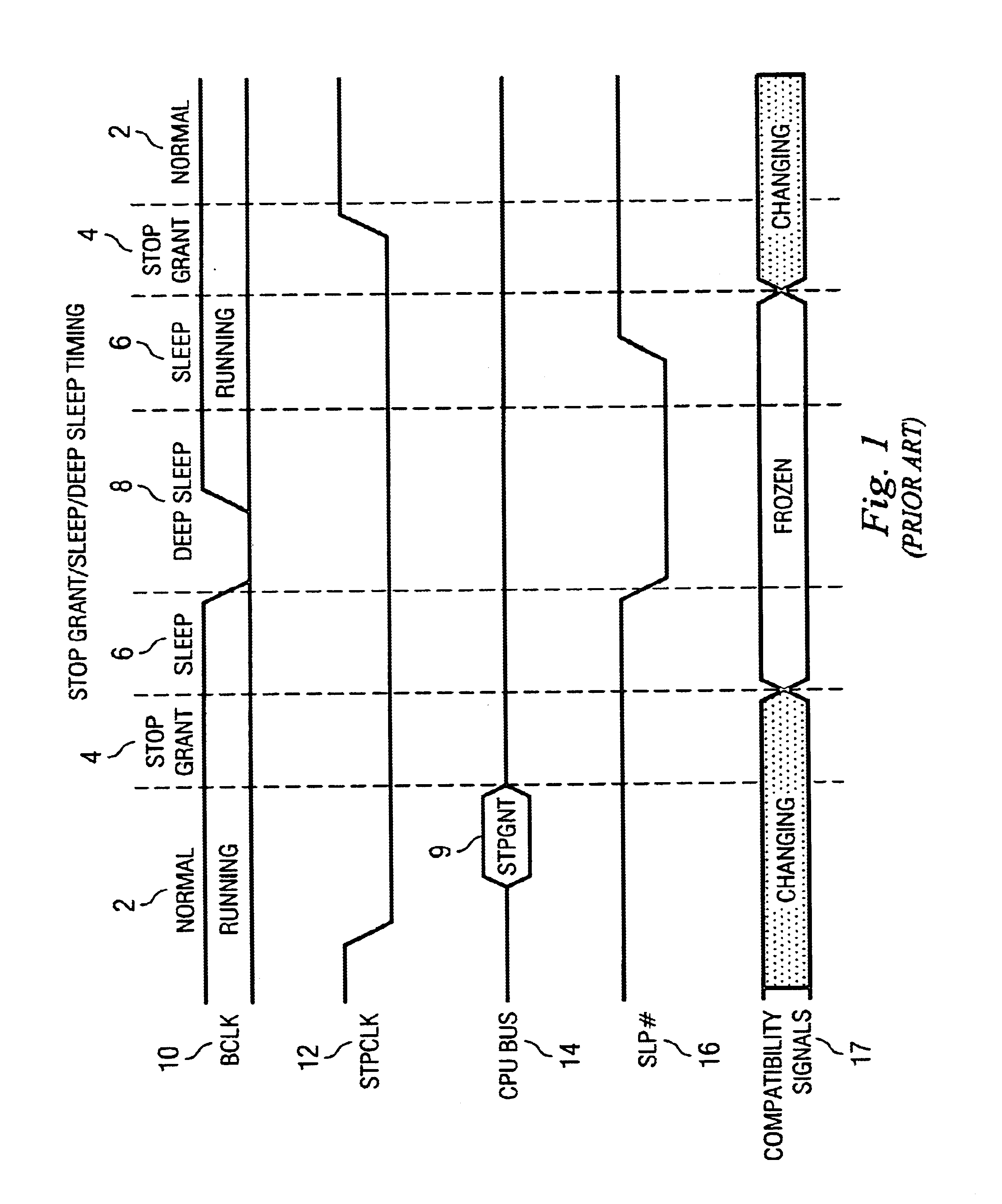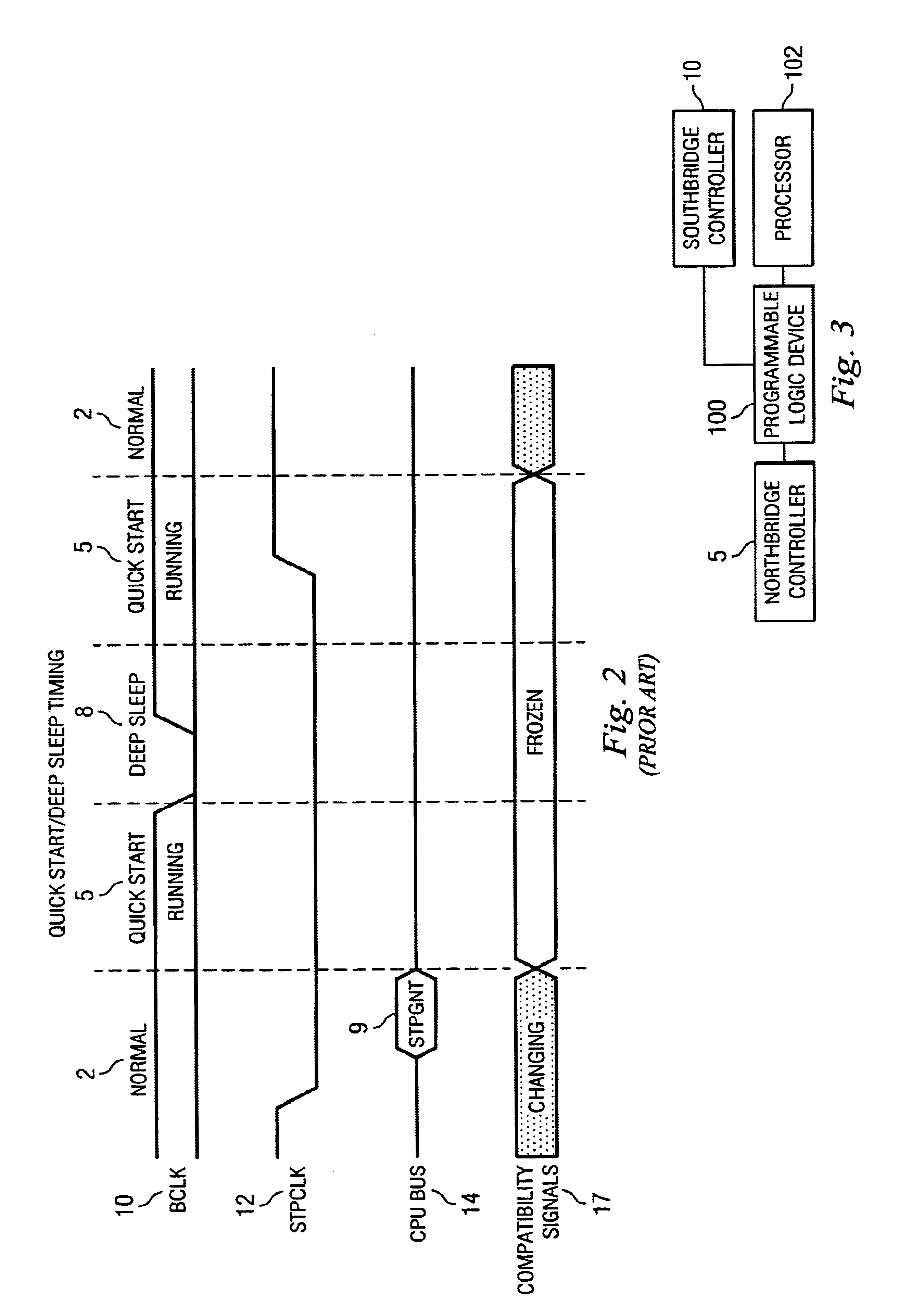Processor power state transistions using separate logic control
a technology of logic control and power state, applied in the field of computer systems, can solve the problems of not having the ability, unable to support a processor using intel® speedstepTM or similar power conserving technology, and limited processor response to inpu
- Summary
- Abstract
- Description
- Claims
- Application Information
AI Technical Summary
Benefits of technology
Problems solved by technology
Method used
Image
Examples
Embodiment Construction
[0047]Now referring to FIG. 3, illustrated is a top level diagram of the PC system showing the interface between chipset controllers, north-bridge controller 5 and south-bridge controller 10 to PLD 100 and processor 102. Select power control signals from north-bridge controller 5 and south-bridge controller 10 are passed to the processor 102 by way of PLD 100. The signals that are passed through PLD 100 are involved in placing the processor into a deep sleep or C3 state and bringing the processor back into operating or C0 state.
[0048]The following table defines the signals used by embodiments of the computer system in performing the processor power state transitions.
[0049]
SignalDefinitionC_CPUPWROKPower OK indication to the processor from the PLDC_CPURST-Processor reset signal from the PLDC_CPUSLP-CPU Sleep control signal to the processor from thePLDC_STPCLK-Processor stop clock signal from the PLDCLKPLD clock inputCPU_STPInput signal to the clock generator that controls theprocesso...
PUM
 Login to View More
Login to View More Abstract
Description
Claims
Application Information
 Login to View More
Login to View More - R&D
- Intellectual Property
- Life Sciences
- Materials
- Tech Scout
- Unparalleled Data Quality
- Higher Quality Content
- 60% Fewer Hallucinations
Browse by: Latest US Patents, China's latest patents, Technical Efficacy Thesaurus, Application Domain, Technology Topic, Popular Technical Reports.
© 2025 PatSnap. All rights reserved.Legal|Privacy policy|Modern Slavery Act Transparency Statement|Sitemap|About US| Contact US: help@patsnap.com



